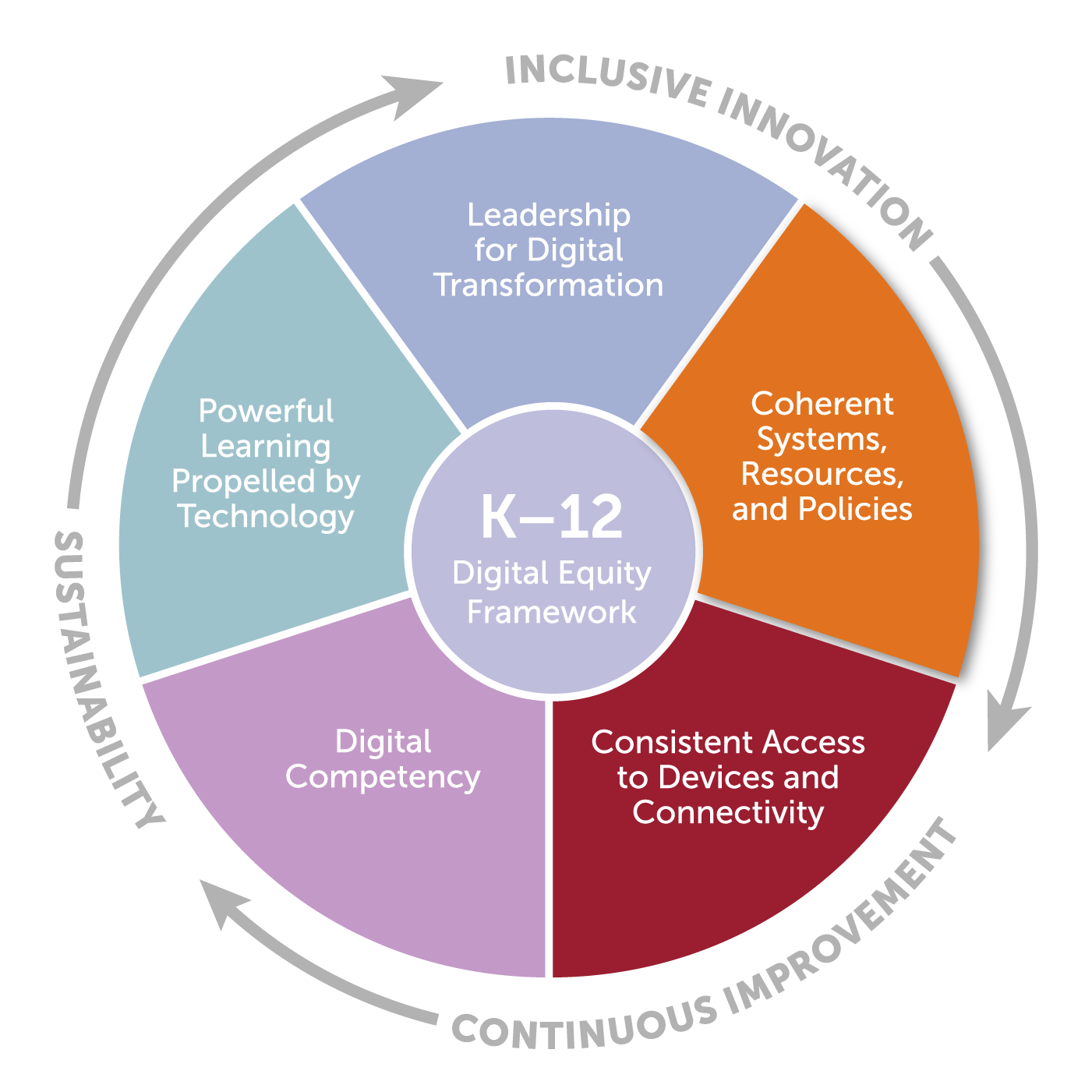This domain ensures that all learners have adequate and consistent access to high-speed internet, devices, and emerging technologies and learning tools, both within and outside the classroom. The domain places a major focus on physical infrastructure, procurement, device distribution and maintenance, and the development of sustainability plans in order to ensure high-speed connectivity, powerful devices, and emerging technologies provide uninterrupted access to powerful learning for all.

The domain indicators provide guidance on what school and district stakeholders need to accomplish to activate the domains. Hitting these “markers” signal that schools and districts are making progress toward triggering each domain in full.
Essential Question: To what extent is providing access for all an established commitment that has been internalized and communicated among relevant partners and members of the school community?
The state, district/network, and schools are collectively responsible for ensuring that learners, staff, and families, particularly those from historically underserved communities, have consistent, reliable access to high-speed internet, powerful devices, and emerging technologies both within and outside the classroom. This responsibility is fulfilled through collaborative efforts and targeted initiatives, as evidenced by:
Comprehensive infrastructure assessments lead to proactive maintenance, upgrades, and sustainability plans that ensure uninterrupted access to powerful learning tools and resources for all, focusing on historically underserved populations, as demonstrated by:
Collaborative development and implementation of specific programs aimed at identifying and bridging the digital divide, particularly for learners from marginalized communities. These initiatives should be guided by the development of a “portrait of a learning environment,” as outlined in the National Education Technology Plan (NETP). Evidence of these efforts includes:
The procurement and distribution of technology resources are conducted in a manner that ensures intentionality, inclusivity, and equity, ensuring each learner leverages appropriate and effective tools, represented by:
The Digital Equity Competencies for K-12 School Systems define what teachers, instructional technology coaches, and administrators (inclusive of district, school, and IT leaders) need to know and be able to do—and the mindsets they need to have—to activate each of the five domains collectively.
Central to John A. Sutter Middle School’s vision to develop targeted initiatives to address the digital divide they observed among their students was the implementation of a 1:1 device program for all students. To ensure consistent and equitable access, the team created an innovative and inclusive device rollout system in collaboration with their student tech team.
The Digital Equity Framework offers a holistic approach to bridging the digital teaching and learning divides. The framework’s emphasis on interdependence across domains ensures that all aspects of digital equity are addressed. Below are examples that highlight some of the interdependencies across multiple domains:
 Consistent Access to Devices and Connectivity and…
Consistent Access to Devices and Connectivity and…Consistent access to devices and connectivity is a prerequisite for developing digital competencies among learners, educators, and all stakeholders.
As individuals gain digital competencies, they are better equipped to leverage the available devices and connectivity for powerful learning experiences and personal, academic, and professional growth.

Coherent systems, resources, and policies are necessary to ensure consistent access to devices and connectivity for all stakeholders.
Consistent access to devices and connectivity, in turn, enables the effective implementation and utilization of coherent systems, resources, and policies to support digital equity.